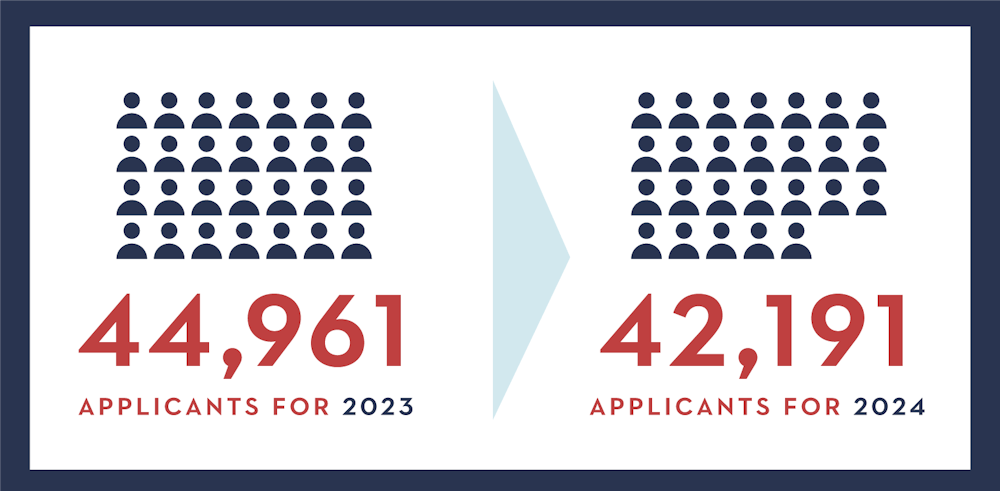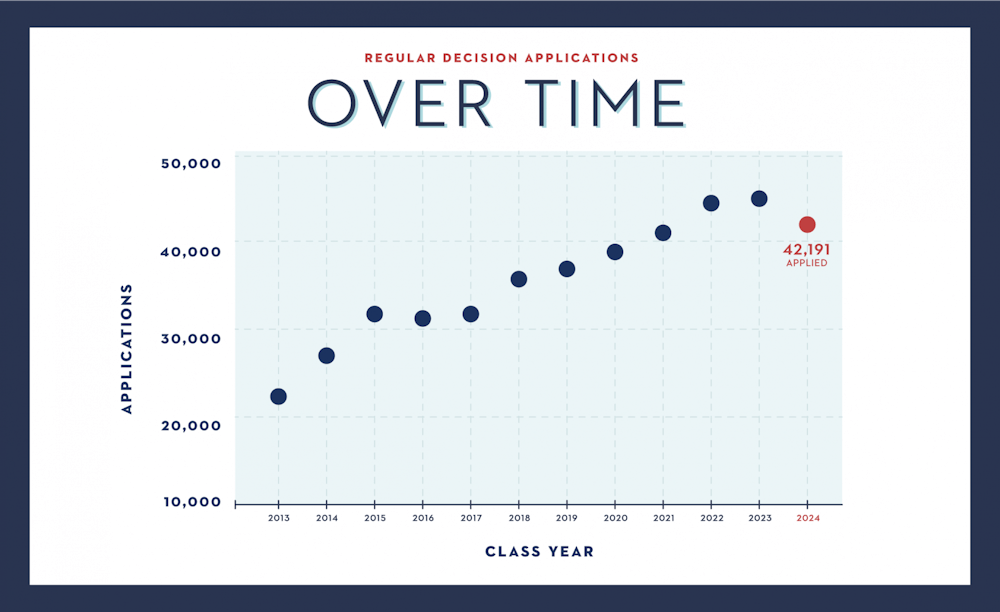
Penn received 42,191 applications for the Class of 2024, nearly 3,000 less than last year's record-breaking applicant pool.
Last year, Penn saw its largest applicant pool to date, with 44,961 applications for the Class of 2023. This year's decline breaks nearly a decade of steady growth in the number of prospective Quakers – the only dip in the applicant pool size in the 2010s was a slight decline from 2015 to 2016.
According to Penn's Dean of Admissions Eric Furda, the applicant pool began to drop and plateau after students became better adjusted to the new SAT and its scoring scale, which was first administered in 2016, and college guidebooks published years of admissions data to reflect the new scoring.The new SAT features a 1600-point scale, while the old SAT had a 2400-point scale.
Furda attributes the spike in applications in part to 2018 to the revamped SAT. That year, Penn received 44,491 applications for the Class of 2022, a 10% increase from 2017's 40,413 applications for the Class of 2021. Furda said more students felt inclined to apply after comparing their new SAT scores with scores of accepted students who took the old test.

"We did attribute a good part of that increase to students seeing scores that were going up at certain bands, and then saying to themselves, 'Wow, this score is here, and their range is here in that group,'" Furda said.
Furda predicts that this plateau in applicants will cause Penn to receive applications around the 40,000 mark for the next few years.
Penn has already accepted 1,269 members of the Class of 2024 through Early Decision. The target size for each year's class is between 2,400 and 2,450 students.
Currently, admissions officers are in the process of reading applications for Penn's five undergraduate dual degree programs: the Huntsman Program, M&T, Vagelos, VIPER, and Nursing & Healthcare Management. Furda said the team has to read dual degree applications first, so that students who are not accepted into dual programs may still be considered for the single-degree option.
Furda said he is not currently looking to increase Penn's class size in the near future, and noted it is already among the largest in the Ivy League, second to Cornell University.
"We're not trying to get more applications to deny more 18-year-olds," he said.
Admissions decisions for regular decision applicants will be released in mid-March.
The Daily Pennsylvanian is an independent, student-run newspaper. Please consider making a donation to support the coverage that shapes the University. Your generosity ensures a future of strong journalism at Penn.
Donate






